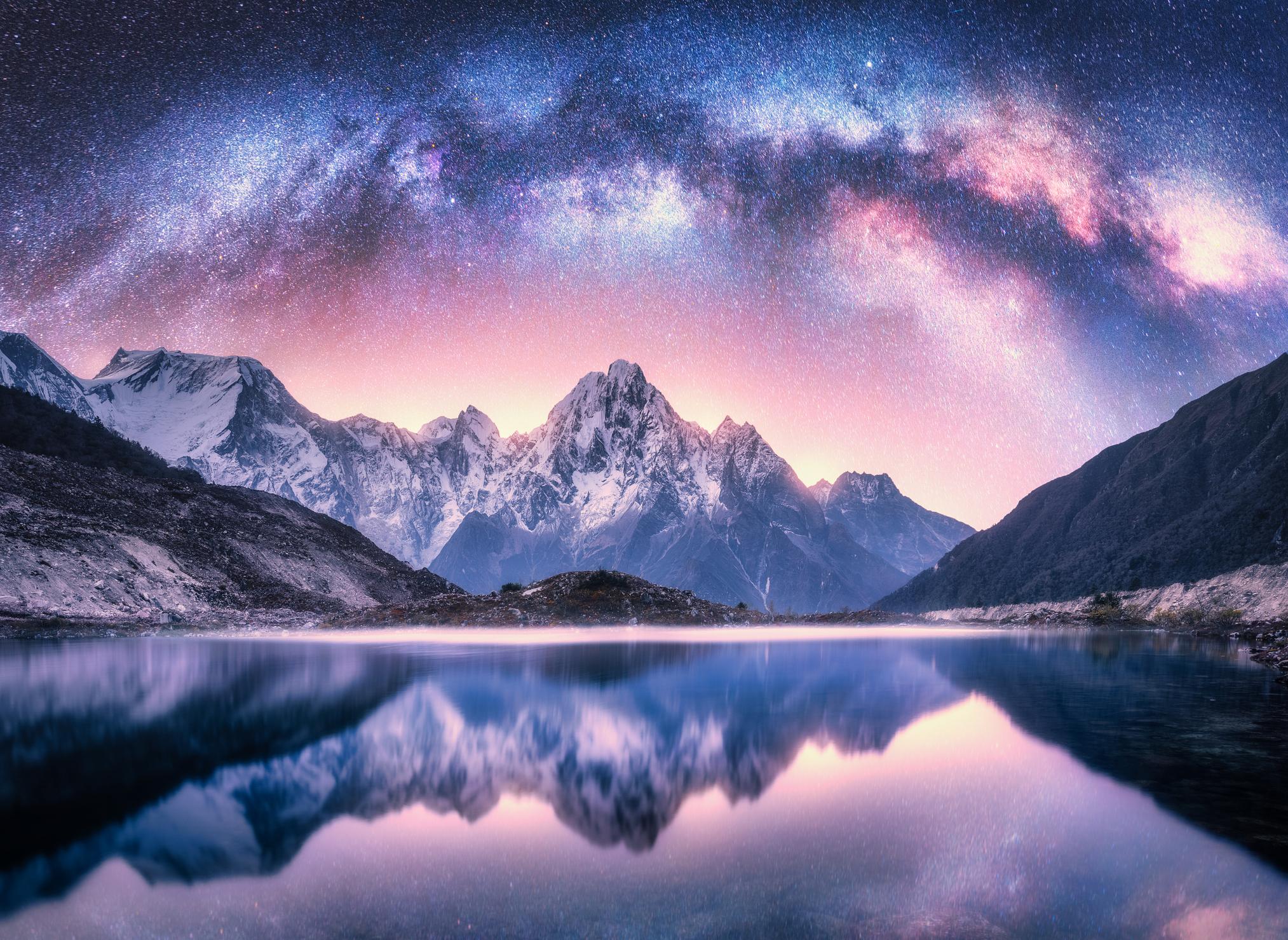The best places in to see dark skies at their fullest are remote regions which, while cut off from the world, can connect us to the universe.
With winter comes shorter days and darker (colder) nights. At this time of year, most people have less direct contact with nature. Whereas in summer the lines between the outdoors and indoors blur as we swim in oceans and brush up against heather and grasslands on hikes, in winter, we hide inside where it’s warm and light.
There are lots of good reasons for doing this, but we’ve lost something in our comfort - that connection with the dark which our ancestors had. That feeling of looking up at skies alive with comets, constellations planets and meteor showers; seeing the Andromeda galaxy, 2.5-million light-years away, and feeling like we are one tiny part of something incomprehensibly massive.

A full 99% of Europe now lives in light pollution, meaning that even on clear nights, most people can only see a few stars. But travel to our world’s wild places and you can (quite literally) discover new worlds. The sky is neither empty, nor indeed, particularly dark.
As Vincent Van Gogh wrote in a letter to his sister, shortly before painting ‘The Starry Night’: “It often seems to me that night is still more richly coloured than the day; having hues of the most intense violets, blues and greens. If only you pay attention to it you will see that certain stars are lemon-yellow, others pink or a green, blue and forget-me-not brilliance.”
That feeling of looking upwards and seeing dark skies alive with comets, constellations, planets and meteor showers...
The night sky offers us a connection to nature at a time when that so often disappears. Quick tips for spotting it include getting away from cities, and visiting when the nights are darker and longer (i.e. in winter). Here are some of the best places in the world for stargazing adventures, where dark skies still rule:
- The Tian Shan Mountains, Kyrgyzstan
- Etosha National Park, Namibia
- The Isle of Rum, Scotland
- The Langtang Valley, Nepal
- Jokulsarlon, Iceland
- The Carpathian Mountains, Romania
- Pyhä-Luosto National Park, Finland
- The Danum Valley, Borneo
- Parque Patagonia, Argentina
- The Finnmark Plateau, Norway
Now, let’s take a look at each of these stargazing havens and look at what you can do while you’re out in these wild places, before the darkness descends.
1. The Tian Shan Mountains, Kyrgyzstan
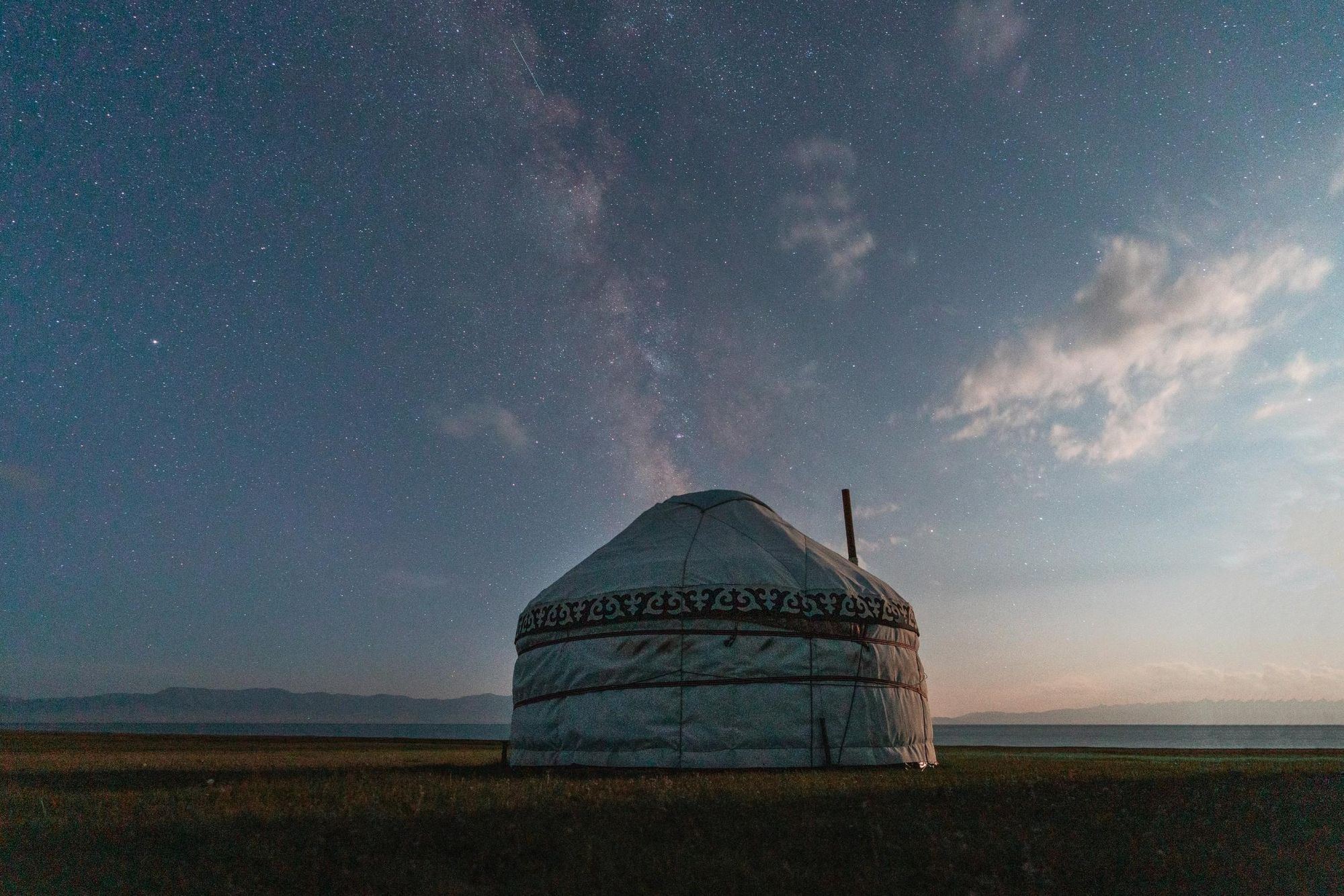
The Kyrgyz Steppe leads our list for stargazing because it is a place like no other. No obnoxious buildings dare block your view of the sky here - only the peaks of the Tian Shan mountains. By day, journey through towering canyons and along mountain lakes on horseback. There will be snow here in winter, and so, snowshoes are required to move along the crisp trails of powder.
Immerse yourself in nomadic culture with visits to eagle hunters and yurt crafters, then find a scenic spot to watch the skies. The cold temperatures mean the nights are often crisp and clear here. There is so little light pollution here that if you’re near a lake, you’ll see the stars reflecting back off the water.
When is winter? December to February
How to get here? You’ll want to fly into Bishkek Airport to begin your adventure in Kyrgyzstan. Ala Archa National Park is around a 90-minute drive from the capital, while the steppe awaits further inland. Buckle up, because it may take a long (but beautiful) road trip to get there.
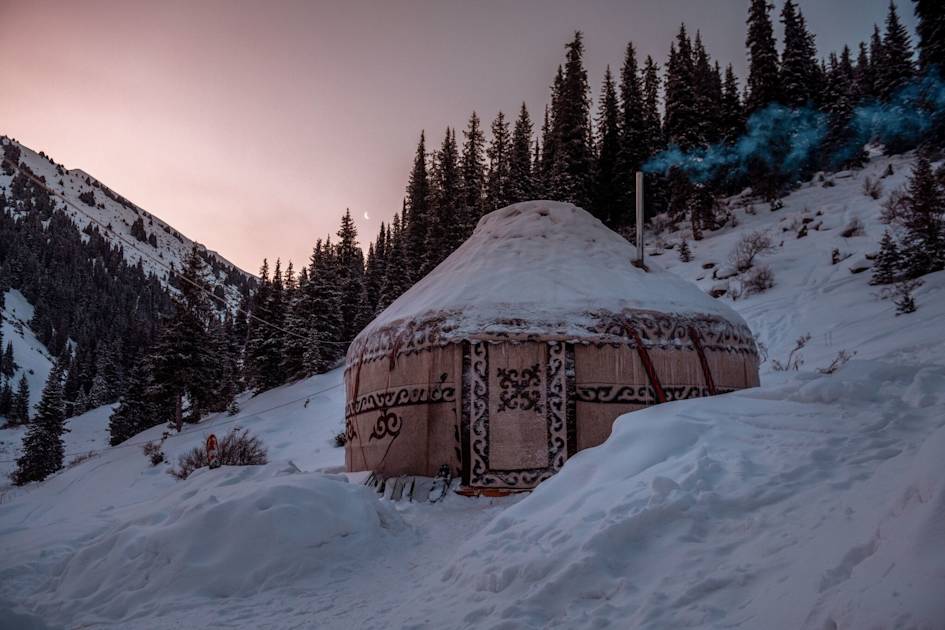
2. Etosha National Park, Namibia
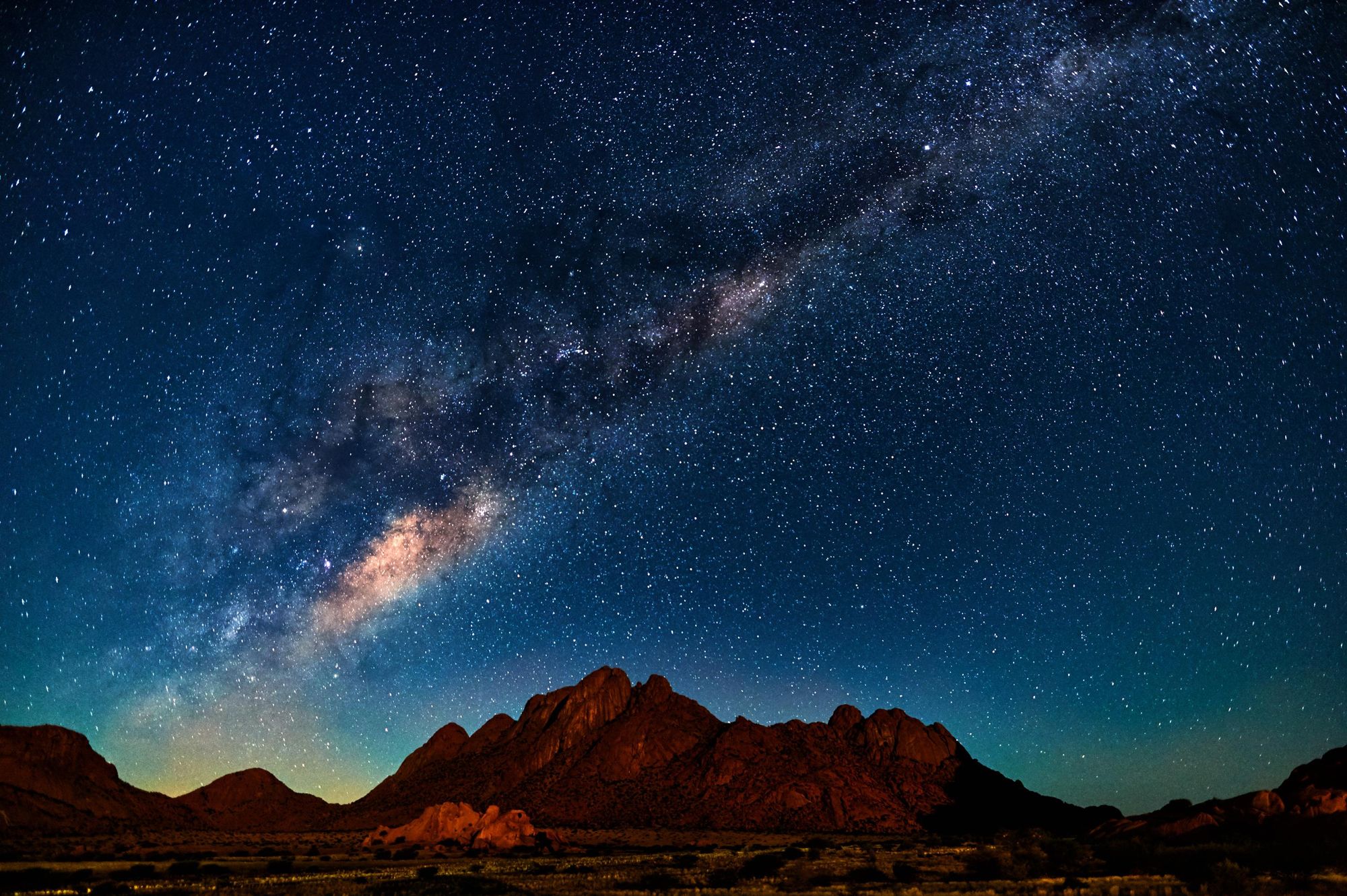
If you’re looking to combine some full night skies with some of the world's most charismatic wildlife, then look no further than Etosha National Park in Namibia. This is one of the premier wildlife-watching destinations in all of Africa, home to wildebeest, rhinos, linos, elephants, giraffes, leopards and so much more.
During the daytime, you can watch these animals living their lives on the plains, but the magic doesn’t end when the sky goes dark. Beyond the daylight hours - after a famous African sunset - you can see a dazzling array of stars and watch the Milky Way splashed across the sky, uninterrupted by artificial light. Extend your trip to explore the terrain of the Spitzkoppe Mountains and beyond.
When is winter? May to September.
How to get here? Fly into Windhoek International Airport in the capital of Namibia. The drive from Windhoek to Etosha is around six hours. Break it up with a stay at Naukluft en route.
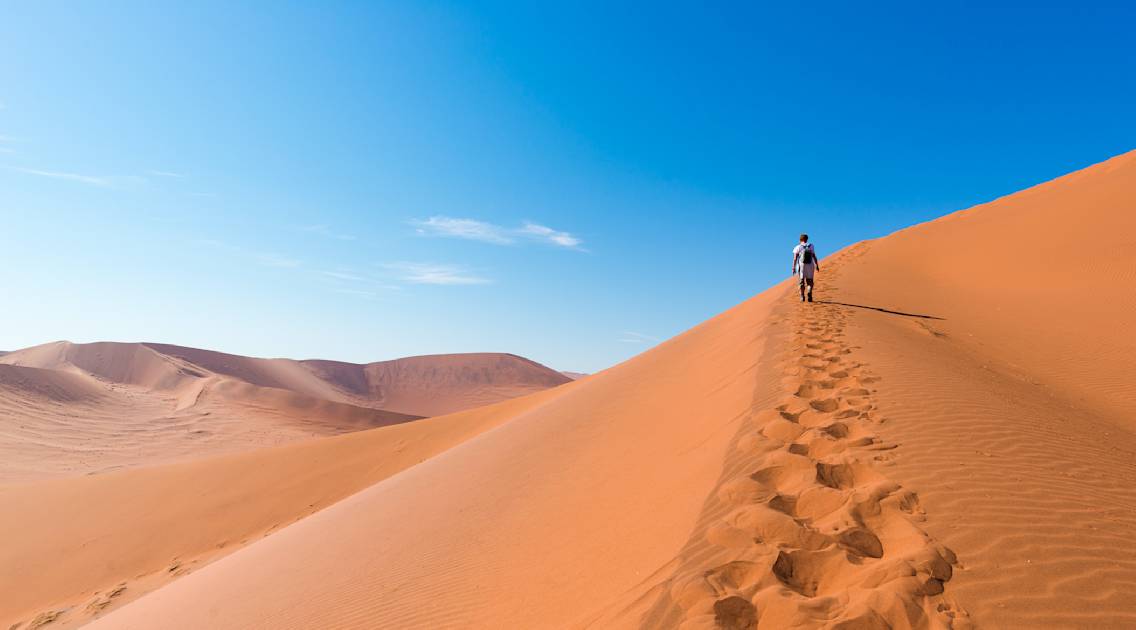
3. The Isle of Rum, Scotland
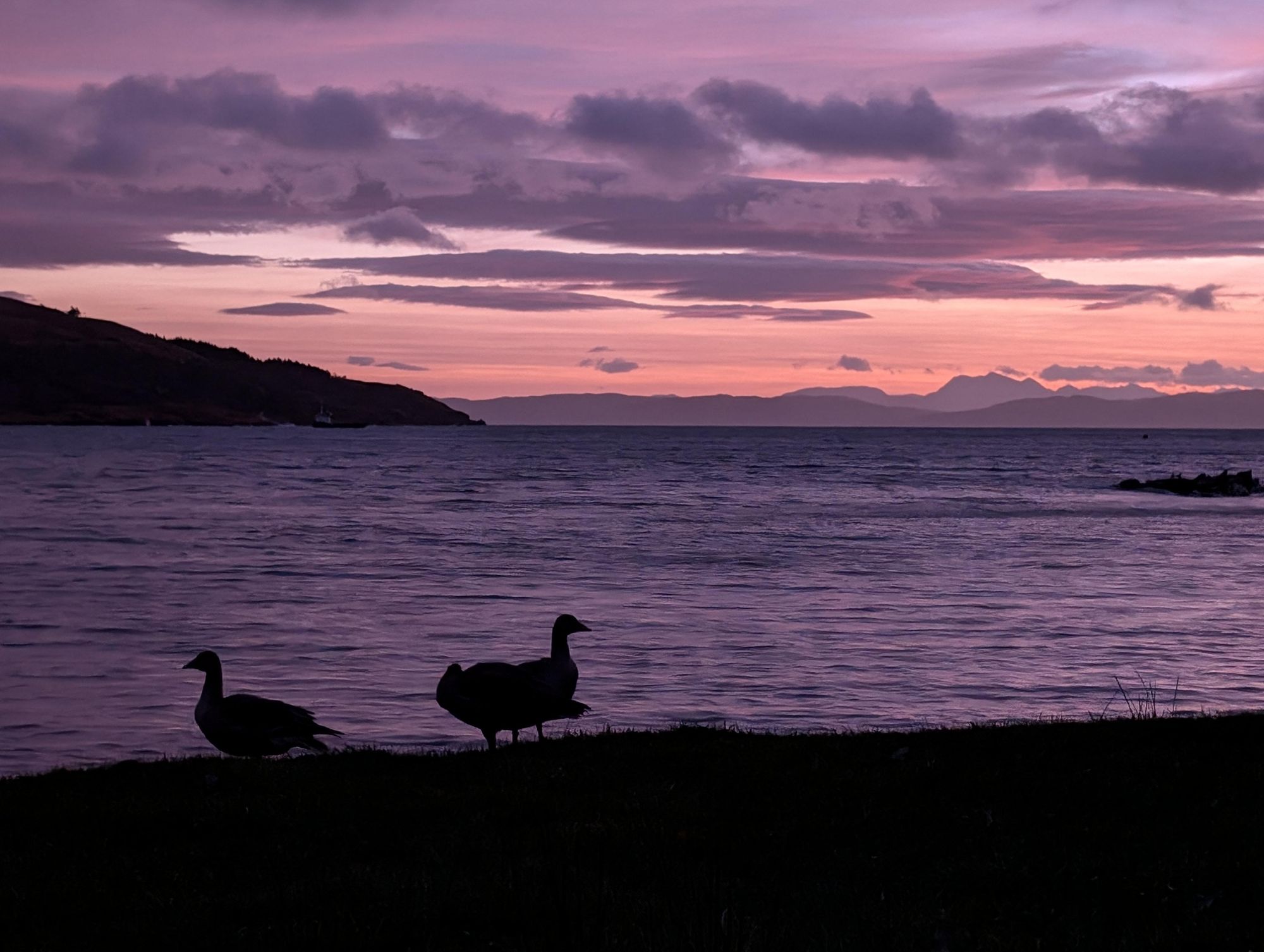
Only 40 people live on the Isle of Rum, which is the largest of Scotland’s Small Isles, and sits off the west coast of the country. The island is a sight to behold from the mainland, with the huge mountains in the south rising just as dramatically as those on the neighbouring Isle of Skye. There are more deer than people here, and the wild Atlantic views are sensational, making it popular with hikers who like to get far from crowds. The traverse of the Rum Cuillin is one of the best hikes in Scotland.
There’s only one settlement on the island of the Isle of Rum - it's called Kinloch, and it's situated on the east of the island. Kinloch is owned by the community, while the other 97% of Rum is actually a nature reserve. So if you’re going to be exploring the wild edges, you’ll have to make use of the bothies or, indeed, bring a tent.
All of this, and a conservation push by the community, led to the Isle of Rum being named Scotland’s first Dark Sky Sanctuary in mid-2024. This island, which sits off the west coast of the British Isle - itself, off the west coast of Europe - is isolated from light pollution, and home to Europe’s darkest skies.
When is winter? December to February.
How to get here? To reach Rum, take the famous West Highland Line (crossing Glenfinnan Viaduct, of Harry Potter fame) to Mallaig, on the west coast of Scotland, and then get the Caledonian MacBrayne ferry out to the island.
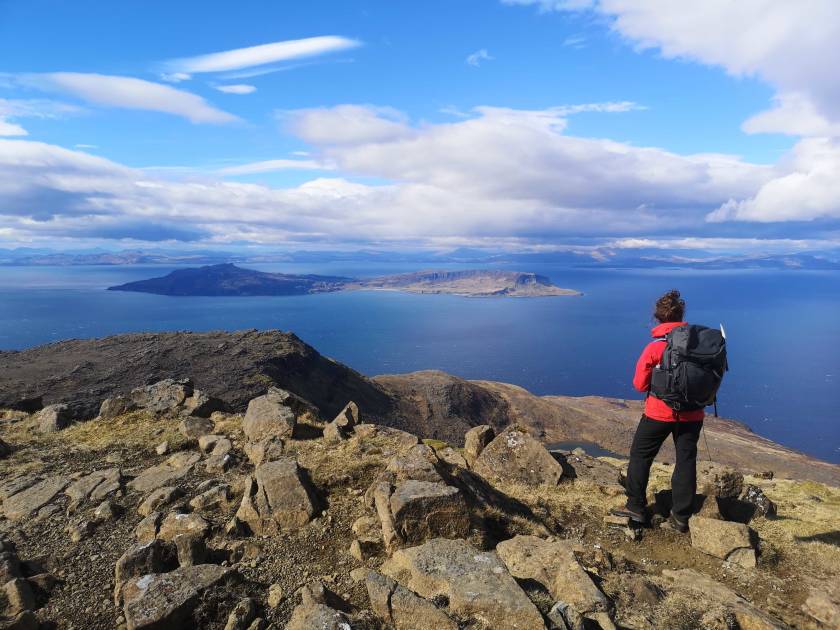
4. The Langtang Valley, Nepal
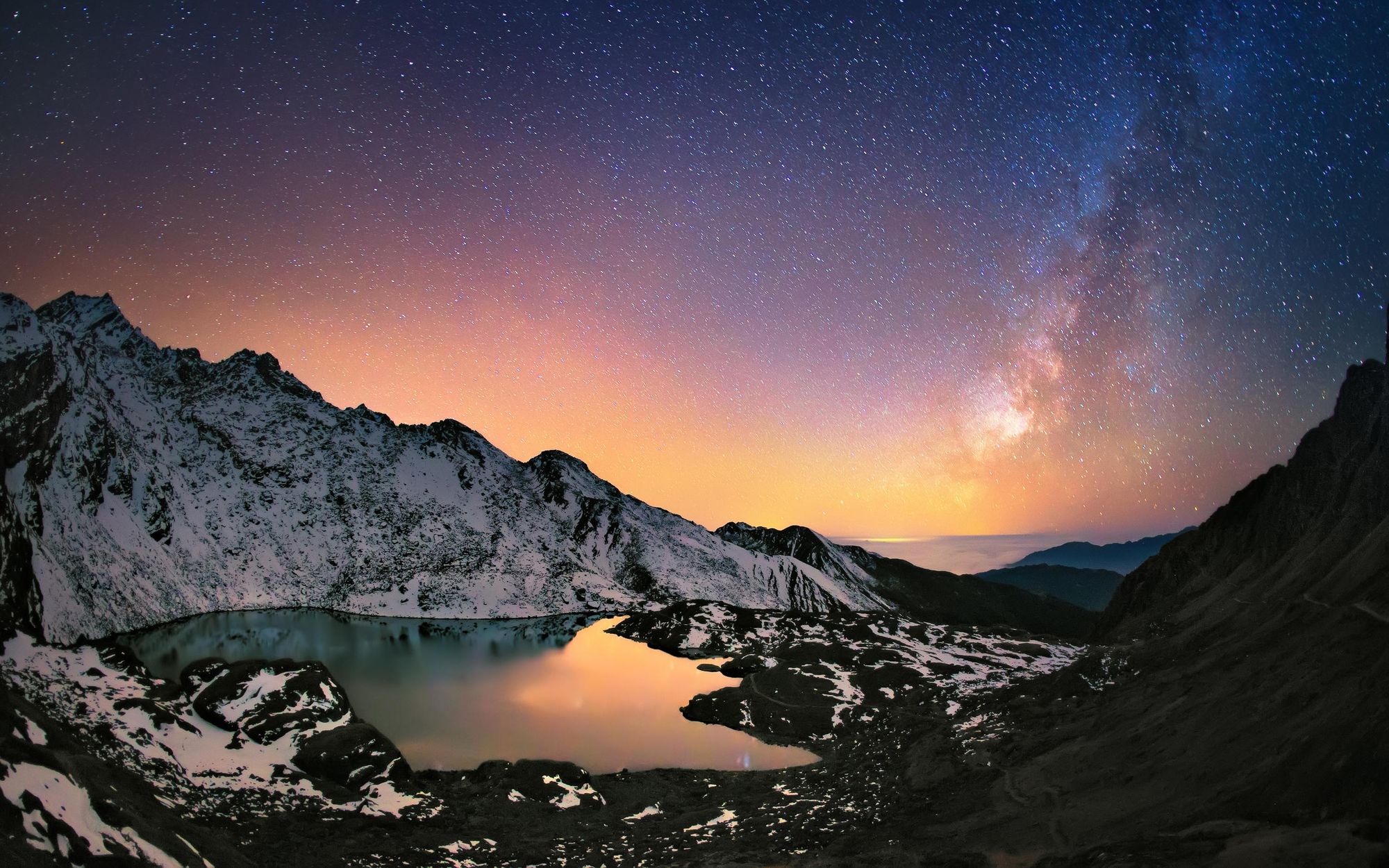
The Langtang Valley in Nepal is a great, but slightly less-trodden trekking region - particularly for those who are looking for something a little more accessible in Nepal (and which doesn’t take seven weeks to walk). The area isn’t too far from the capital of Kathmandu either, but it has the might of the Himalayas on show.
Langtang region is home to popular walks including the Lake Gosainkunda trek, the Tamang Heritage Trail and the improbably-named Numbur Cheese Circuit Trek - but if you’re visiting with a love for the mountains, we’d particularly recommend checking out Yala Peak. At 5,500m (18,044ft), this mountain is one of the few of this height in the world which can be climbed without serious mountaineering skills.
“Yala Peak attracts people who want to try climbing a peak around 6,000 or 7,000m, but they don’t know how their body is going to feel,” explains local guide Himal Pandit. “It’s a peak for people who want to try climbing a big mountain for the first time.” You’re far from the city lights, and way up high on the mountains here. The stars are superb.
When is winter? December to March
How to get here? After getting to the capital of Kathmandu, you’ll need to drive north for a few hours on scenic but bumpy mountain roads. It’s a significantly longer journey by bus.

5. Jökulsárlón, Iceland
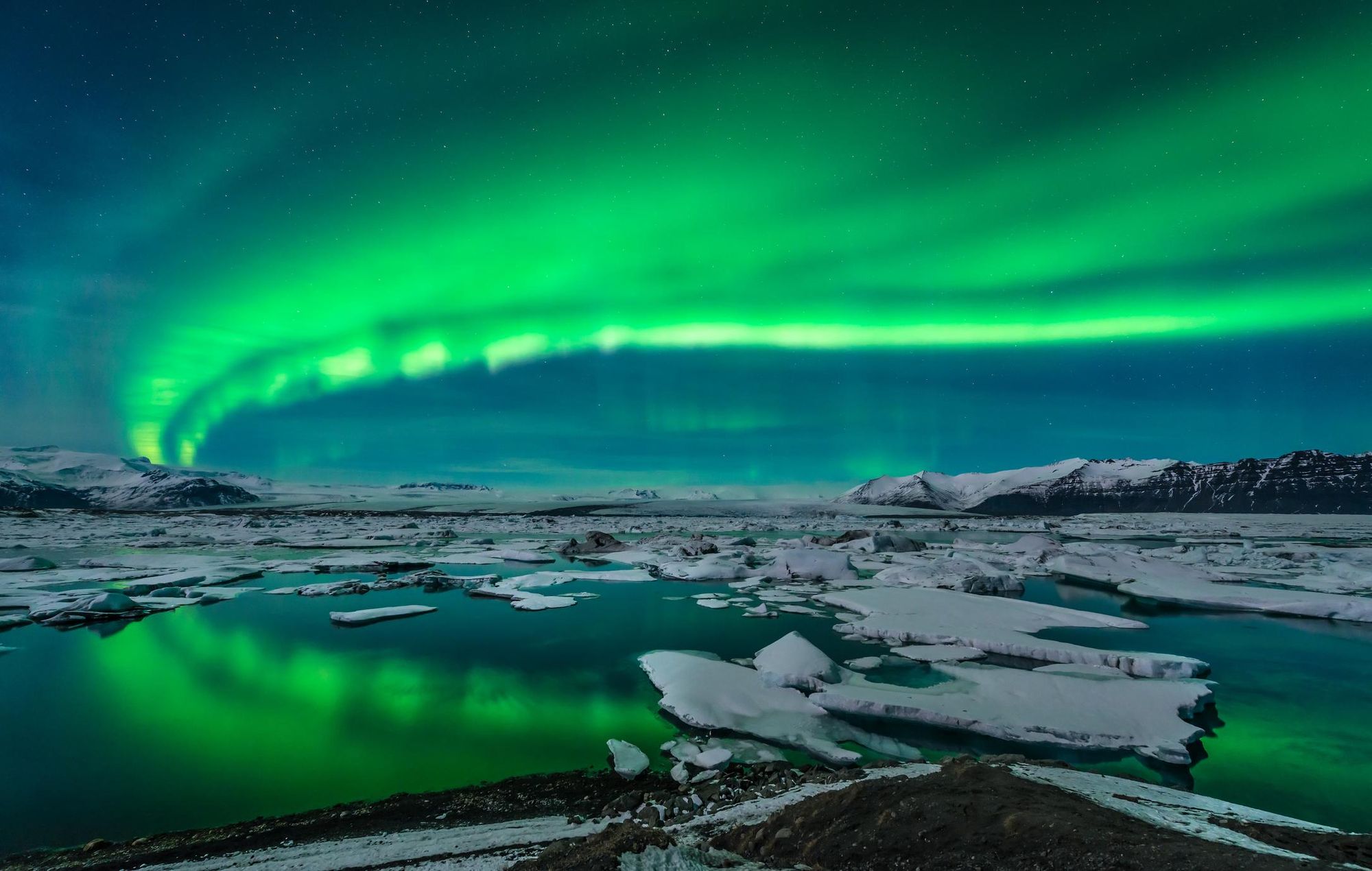
Iceland is a storied country of mythology and sagas, many of which are inspired by the otherworldly nature the country is lucky enough to possess. This is a true country of fire and ice, home to the Mýrdalsjökull glacier and Eyjafjallajökull volcano. It is a place of black beaches, layering waterfalls which gush down tall cliff faces, natural springs which warm up hikers - and it is a place where the colourful flicker of aurora borealis can often be seen lighting up the dark.
A trip to Iceland in winter is a great place for some snowy hiking or to get an introduction into mountaineering on ice - whether that’s clipping into crampons to cross a glacier or getting out the ice axe to climb. If you get the chance to see the northern lights above the Jökulsárlón glacier lagoon - the Crown Jewel of Iceland - by the Vatnajokull glacier, it’s something you’ll truly never forget.
When is winter? December to March
How to get here? Arrive into Keflavik Airport near Reykjavik, and start your road trip from there.

6. The Carpathian Mountains, Romania
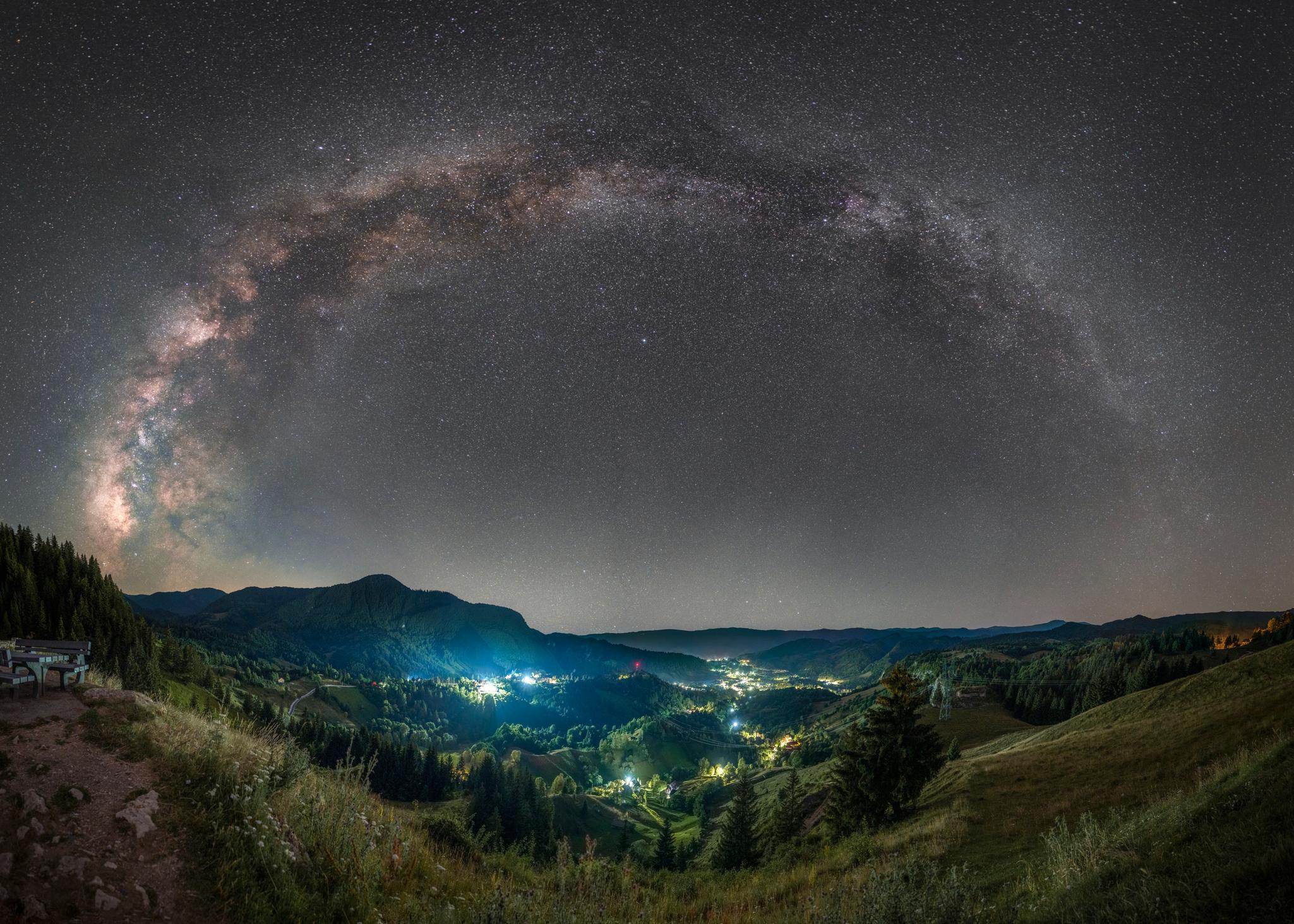
The Carpathians are one of Europe’s last true areas of wilderness, and Transylvania is a famously dark place (not just because of Dracula).
This is a place where modern infrastructure and sprawling cities didn’t diminish and destroy nature like they did in the west. As a result, charismatic species like wolves and bears, reduced to mythology elsewhere on the continent, still roam free today. As well as those remarkable animals, you can also see enormous bison herds, which were reintroduced to Romania back in 2014, roaming the vast Carpathians as you snowshoe through the landscape in winter.
Head to the Apuseni Mountains in the west and you can guarantee yourself a varied adventure - criss-crossing through powdery planes and forests by day, exploring caves untouched by winter, and heading back out when night falls for walks beneath beautiful, starry skies (keeping your eyes open for wildlife).
When is winter? December to March
How to get here? It’s around a three hour drive to the Carpathians from Cluj-Napoca Airport.
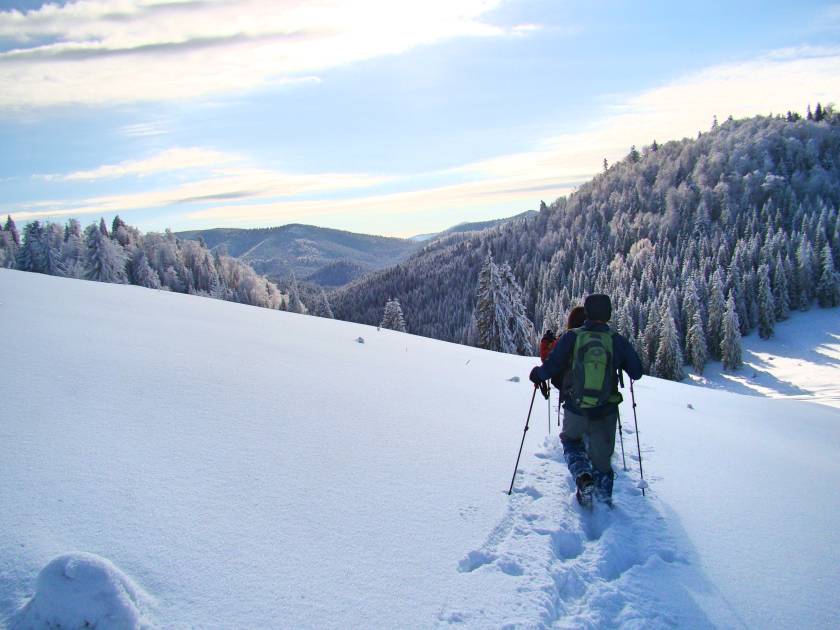
7. Pyhä-Luosto National Park, Finland

Finnish Lapland is a special place. You don’t get an awful lot of daylight at all here during the winter season. What you do get is a lot of snow; sublime forests and trees bent over by the wind and covered in snow, giving them the appearance of monsters. By day you can learn to ice climb, watch reindeer or snowshoe through those trees, taking in the tranquillity.
When night comes it’s all about the aurora borealis here. The reason we’ve highlighted this particular area of Finland is that it’s home to some sublime accommodation. How does falling asleep in a glass-roofed cabin sound, all snug in your bed, looking up at the glow of the northern lights?
When is winter? December to March
How to get here? The national park is 29 miles (47km) from Kemijärvi train station. There is a direct bus connection from the night train to Pyhä.
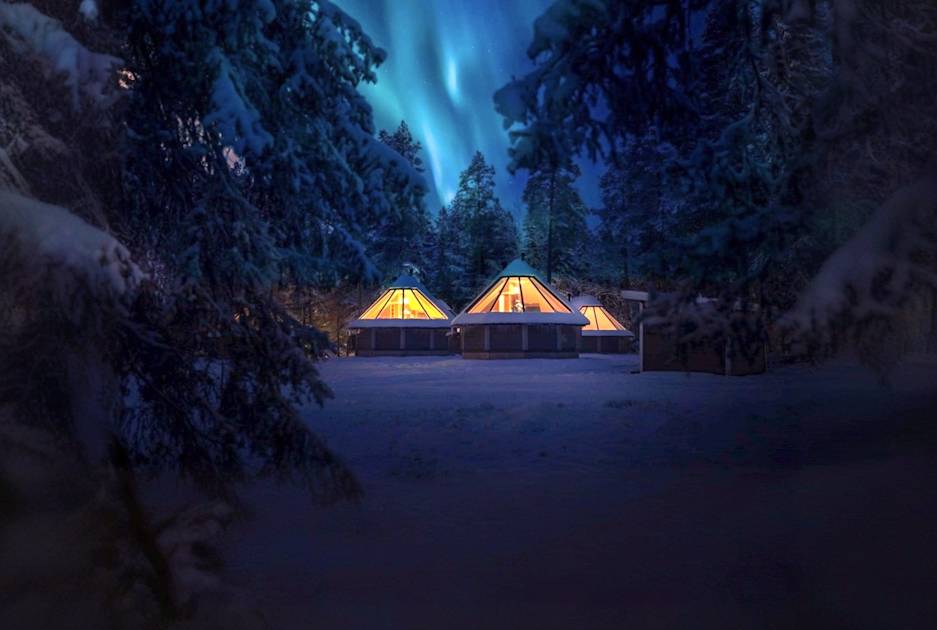
8. The Danum Valley, Borneo
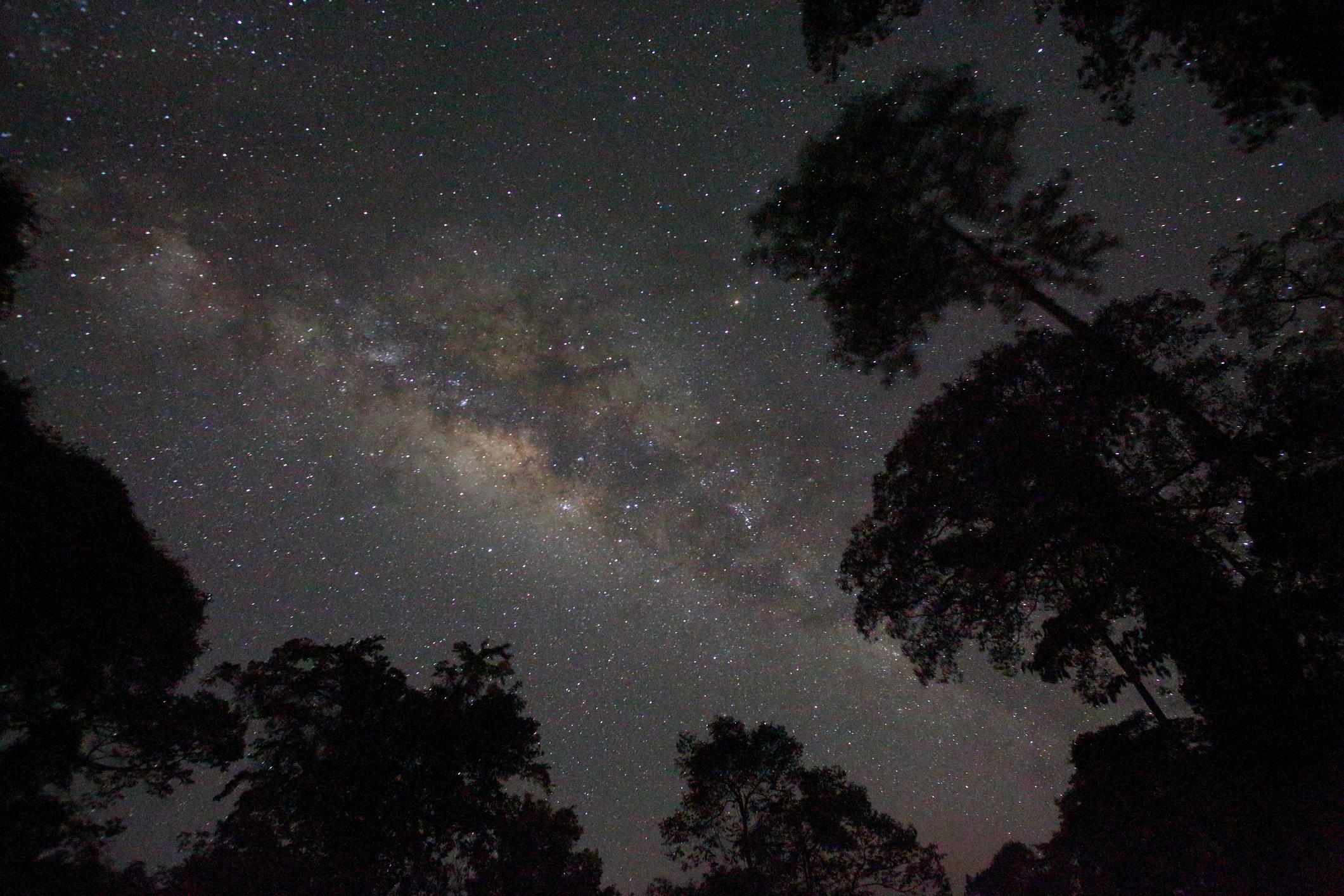
The Danum Valley is one of the oldest rainforests in the world; a pristine, untouched primary region which dates back 130 million years, in the heart of Sabah in the north of Malaysian Borneo.
While this is a tough area to reach, there are some outstanding accommodation options deep in the Danum Valley - notably the Danum Valley Field Centre and the more luxurious Borneo Rainforest Lodge. It’s common while staying at either to head out for night walks when it gets dark. If you get lucky, you'll see western Tarsiers, slow lorises and clouded leopards, as well as tarantulas and frogs.
When a clear night comes along, though, it can be hard to keep your eyes on the trees, rather than the sublime display of sparkling beauty above them. Borneo is a great place for stargazing, whether you're in Sabah or Sarawak, further south.
When is winter? Wet season is from October to February, with the darkest skies in December.
How to get here? The Danum Valley is reached by car from Lahad Datu in eastern Sabah.

9. Parque Patagonia, Argentina
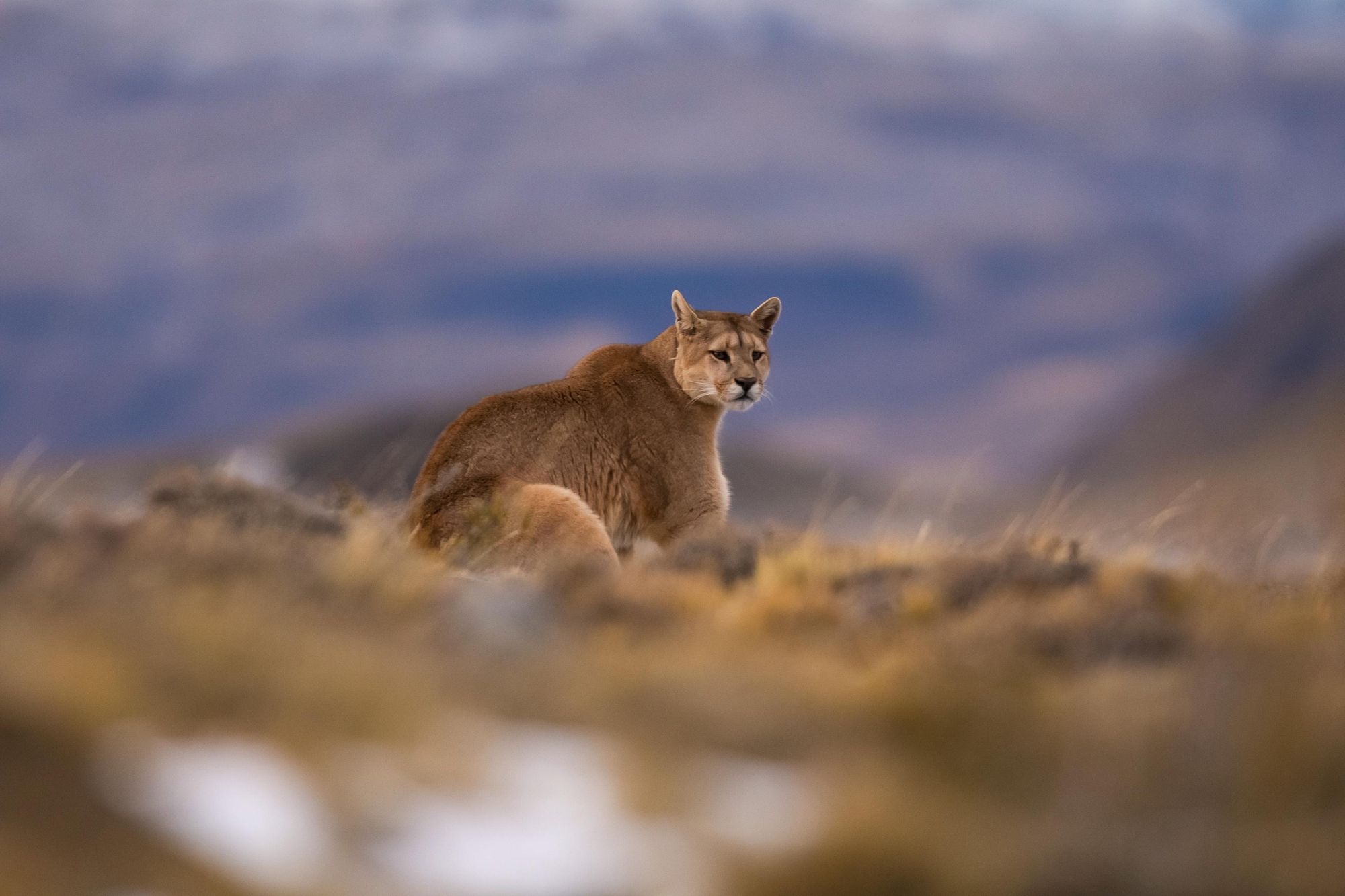
Parque Patagonia doesn’t have the same enormous mountains as Torres del Paine. Much of it is dusty steppe. But hike deep within and you’ll discover remarkable canyons - dramatic and deep - which are home to a thriving puma population (helped by a large-scale Rewilding Argentina project). Wildlife enthusiasts should also look out for the herds of guanacos, ancient ancestors of the llama, and for the adorable Wolffsohn's viscacha - animals which look a little like rabbit-squirrel hybrid, and which hang out on the sun-drenched cliffs.
When you’re in Patagonia you are as far from light pollution as you can get. When the skies clear, you can see more stars and colours than you knew existed.
When is winter? June to September
How to get here? With difficulty, is the answer. Distances in Patagonia are long and lonely. From Buenos Aires, you can fly to the closest commercial airport, Comodoro Rivadavia, around five and a half hours away.
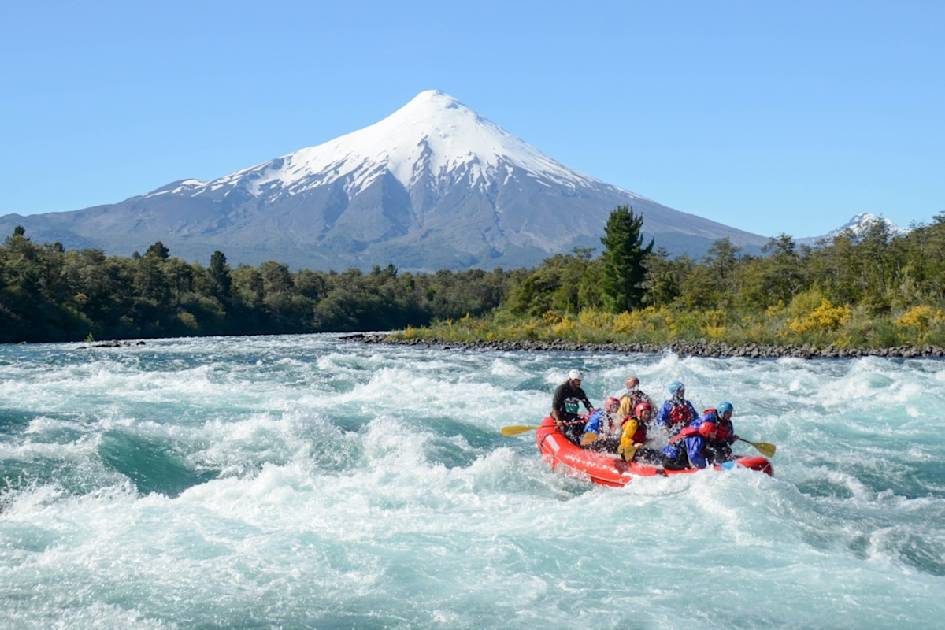
10. The Finnmark Plateau, Norway
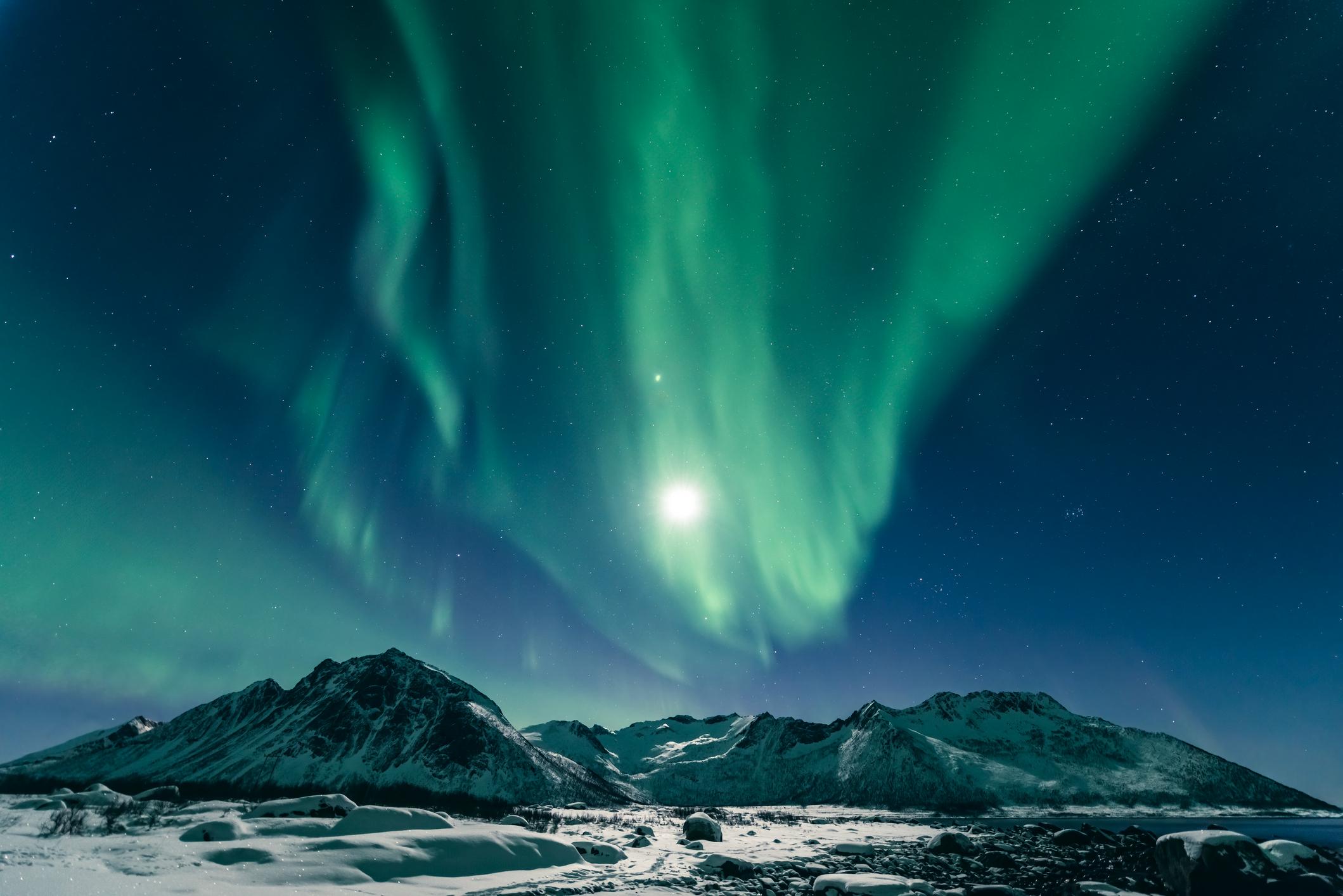
The Finnmark Plateau is a the largest plateau in Norway - a huge, sprawling area of nature which stretches over 8,494 miles (22,000 square kilometres). The vast in-land of this area is still home to the Sami people, the indigenous people of Arctic Norway, who have their own language. It is still active and is spoken by almost everyone in their communities. While the plateau looks completely untouched by human hands, this is still a pastoral place, used by reindeer herders. It’s a place of rolling hills, low glacial ridges, marshlands and lakes.
There is some lush accommodation hiding out here in the snow. A-frame cabins with floor-to-ceiling windows mean that when you get back from a night walk, you can continue to gaze out in wonder at the stars and the lights of the aurora from the warmth of indoors. There's a special feel about a freezing Arctic sky.
When is winter? December to March
How to get here? Alta City Airport is close to the Finnmark plateau.

Inspired? Check out our full range of adventure holidays now!

